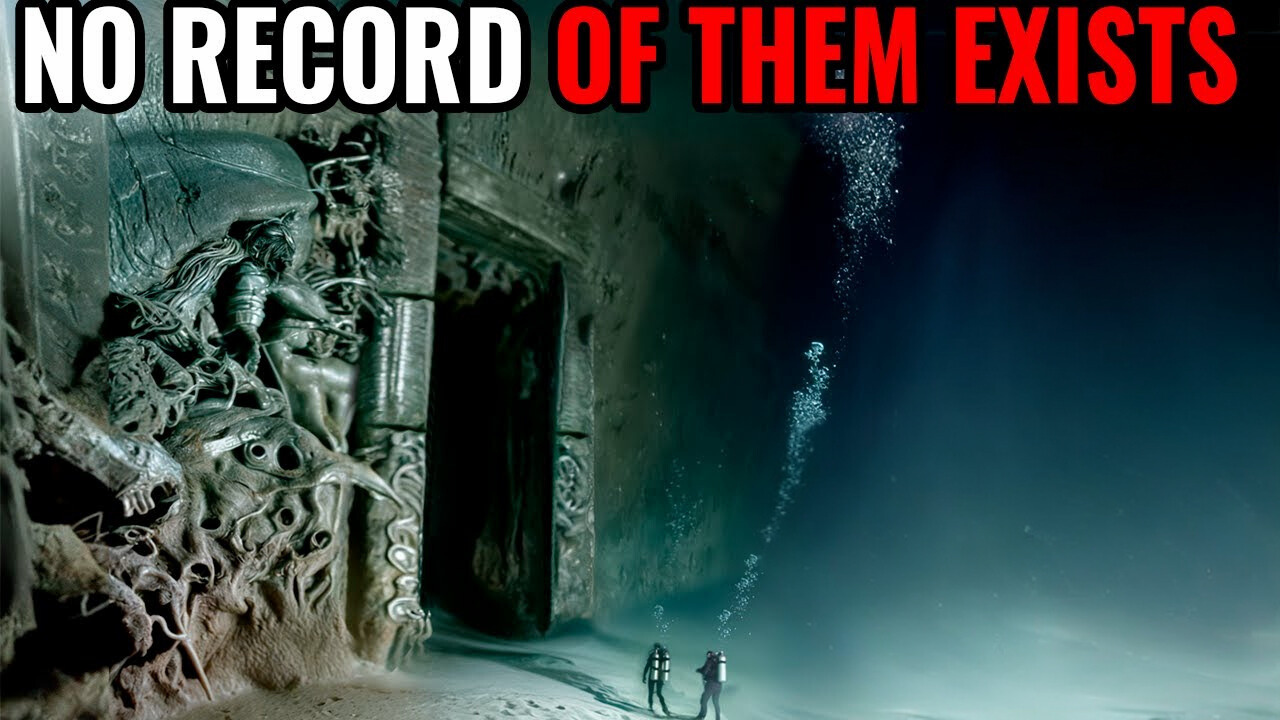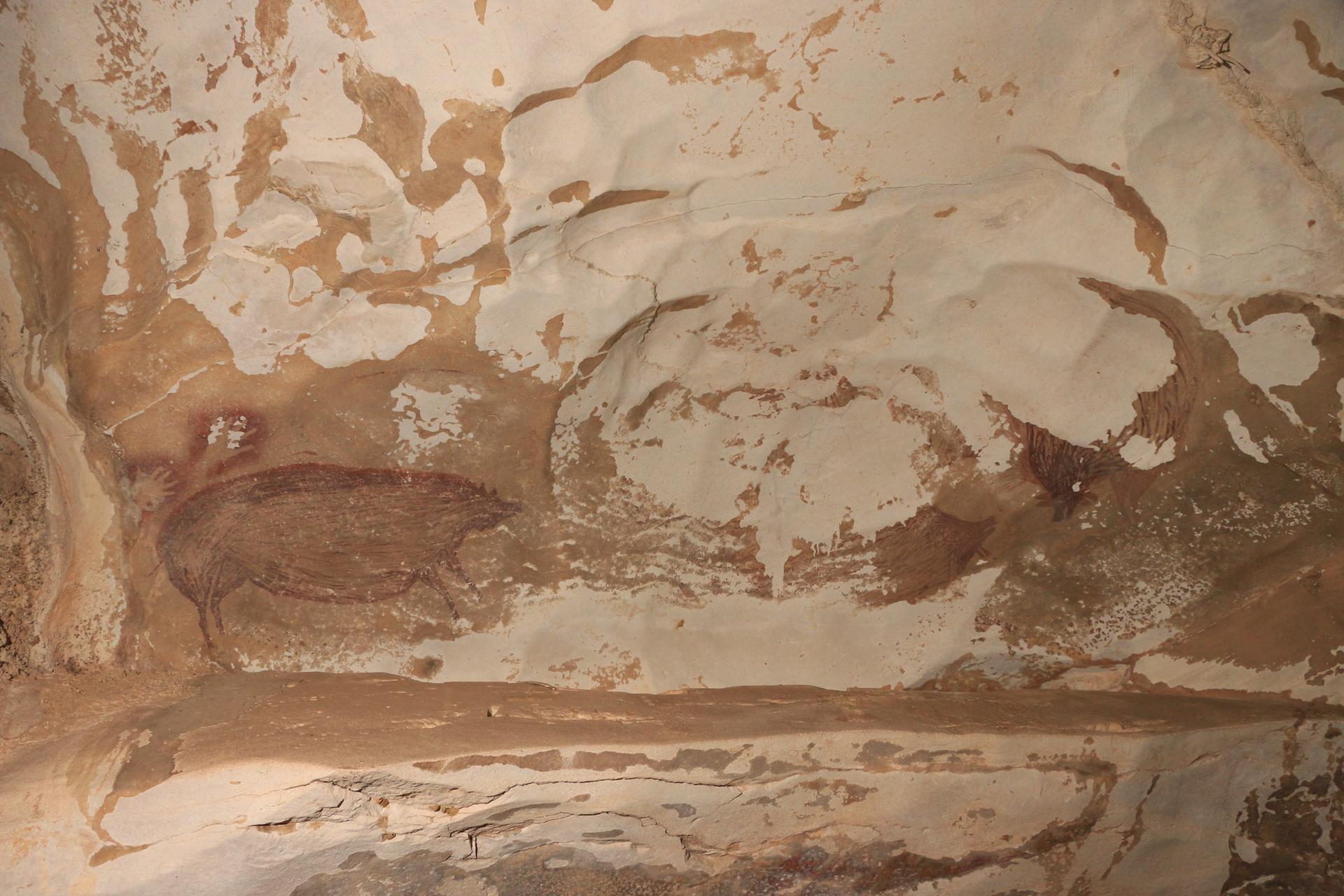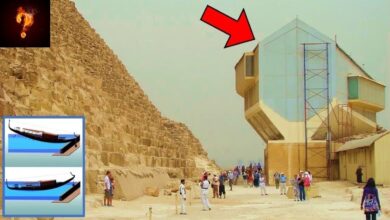Ancient Cave Reveals Lost Civilization That No Records Existed Of
**Mysterious Discoveries in Ancient Caves**

Deep in the recesses of the earth lies a world of darkness, mystery, and the unexpected. From apocalyptic legends, ancient shamans, to undocumented civilizations – caves are places that hold unimaginable secrets. One of the most intriguing stories is the discovery of a lost civilization off the coast of Mexico, which has no historical record.
In 2000, marine engineer Pauline Zelitzky and her husband Paul Weinzweig were conducting a survey of the seabed for the Cuban government. Not only were they looking for sunken Spanish ships, but they also discovered strange shapes on their sonar equipment. They weren’t ships, but rather symmetrical and geometric stone structures – what appeared to be the ruins of an ancient urban area. The images then revealed large structures resembling gates, temples, pyramids and houses – everything you would expect from an ancient civilization.
The news quickly spread, with many sensationalist articles claiming that Atlantis had been found. However, researchers such as geologist Manuel Iturralde from Cuba’s Natural History Museum insist that more evidence is needed before drawing any conclusions. Still, the story of the civilization has captured the imagination of many, as local legends from the Maya and Yucatan indigenous people also tell of an island that sank beneath the waves. Some scientists believe that if such a civilization existed, it may have sunk around 50,000 years ago – 45,000 years before the time of ancient Egypt.
These mysterious ruins suggest the existence of a giant sunken city, hidden in underwater caves in the Yucatan Peninsula. However, since these structures are located at such great depths, it seems impossible to have built them above ground during the ice age. Could they have been destroyed by an extreme disaster and completely submerged?
The strangest thing is that since their discovery, there has been no further official investigation. Some have theorized that the information may have been covered up by the Cuban government. Is this a forgotten 50,000-year-old civilization or a figment of the imagination? We are still waiting for the answer.
a specialized and intentional approach to crafting tools. This discovery sheds light on the ingenuity of early humans, showing their ability to manipulate their environment and innovate in ways that laid the groundwork for future technological advances.
Researchers believe this process wasn’t random but carefully thought out, reflecting a deeper understanding of materials and their properties. By controlling fire temperatures, these ancient communities could maximize the efficiency and effectiveness of their tools, giving them an edge in survival and adaptation. This marks an important step in the evolution of human intelligence and resourcefulness, adding another layer of complexity to the story of our ancestors.
What remains most fascinating about these findings is how they reveal the continuity of human innovation. From prehistoric times to the present, the quest to refine and improve tools has been a cornerstone of progress, bridging the gap between our ancient ancestors and the modern world. This meticulous use of fire at Qesem Cave offers a profound glimpse into the ingenuity and resourcefulness of early humans, a legacy that continues to define us today.

In 2019, Mexico’s National Institute of Anthropology and History revealed the discovery of a cave system near the ancient Maya city of Chichen Itza, on the Yucatan Peninsula. This cave, known as the Cave of the Jaguar God, contained over 150 ritual artifacts that had been untouched for over a millennium. These sacred caves, or cenotes, were essential spaces for Maya farmers. Discovered in 1966 by archaeologist Victor Segovia Aino, the cave was initially sealed off without excavation, and Segovia’s records mysteriously disappeared. It remains unclear why he decided to hide such an important find. Over 50 years later, the cave was reopened as part of the Great Maya Aquifer Project, aiming to explore the city’s water systems. National Geographic explorer Guillermo Anda spent hours navigating through dark tunnels, uncovering artifacts like vases, incense burners, and decorative plates. The team discovered seven ritual offering chambers, and Segovia’s long-lost report was found, revealing artifacts with sacred markings related to the Maya and the Toltec rain god Tlaloc. Holly, a Maya cave expert, explained that cave archaeology is relatively new, as prior research focused on monumental architecture. Using modern technology, including 3D mapping and paleobotany, the project is shedding light on Maya rituals, with hopes that it will offer more insight into Chichen Itza’s history and eventual decline.

In the Gansu Province of northwestern China, the Mogao Caves, also known as the Caves of the Thousand Buddhas, house over 500 hand-carved Buddhist temples. Dating back to 366 AD, these caves were rediscovered in the late 19th and early 20th centuries, sparking renewed interest in the Silk Road. In 1900, a monk named Wang Yuanlu uncovered 50,000 manuscripts in a sealed cavern known as the Library Cave. Today, these caves contain the world’s largest collection of Buddhist art, with paintings depicting Buddhist stories, cave donors, and daily life. The site also features over 2,000 clay sculptures, some over 100 feet tall. These caves illustrate the rich cultural intersections along the Silk Road, with artifacts from Buddhist, Daoist, and Christian origins. Though the caves were abandoned in the 15th century after the Silk Road’s decline, their remote location and desert climate have preserved them well, providing a rare glimpse into ancient cultures.
On the island of Jersey in the English Channel, archaeologists recently analyzed teeth discovered in a cave, dating back 45,000 years. These teeth exhibit a unique mix of human and Neanderthal features, suggesting that they belonged to hybrids. This discovery could provide crucial insights into Neanderthal extinction and the development of modern human species. The cave also contained evidence of a hunting base, with remnants of animals like reindeer, bison, and woolly mammoths. Despite signs of malnutrition, the findings promise to deepen our understanding of early human life.

The world’s oldest known cave painting, found on the Indonesian island of Sulawesi, depicts a wild pig painted with red ochre. Dating back at least 45,500 years, this artwork is thought to be the oldest surviving animal depiction. The discovery provides evidence of early human settlement in the region, likely part of the migration route to Australia. Researchers believe that Sulawesi may hold many more artifacts from these early human travelers.
In an effort to understand the evolution of opposable thumbs, researchers have studied fossilized hands from modern humans, chimpanzees, and early hominids. Their analysis shows that thumb opposition, essential for tool-making, appeared as far back as two million years ago. This discovery correlates with evidence of more complex cultures and increased tool usage during this period.

Lastly, the ancient L’Gil paintings in Somalia, dating back 5,000 to 11,000 years, depict scenes of people interacting with animals like cows, giraffes, and monkeys. These paintings, now damaged, are a crucial part of human history. Advocates for Somali independence argue that greater access to funding for preservation could protect these artifacts and boost the region’s tourism.
In southern Poland, the discovery of secret tunnels beneath Castle Olsztyn has sparked interest. Archaeologists have uncovered a large void under the castle, along with Neanderthal tools dating back 40,000 years and medieval artifacts. Further exploration of these subterranean structures promises more discoveries in the future.








